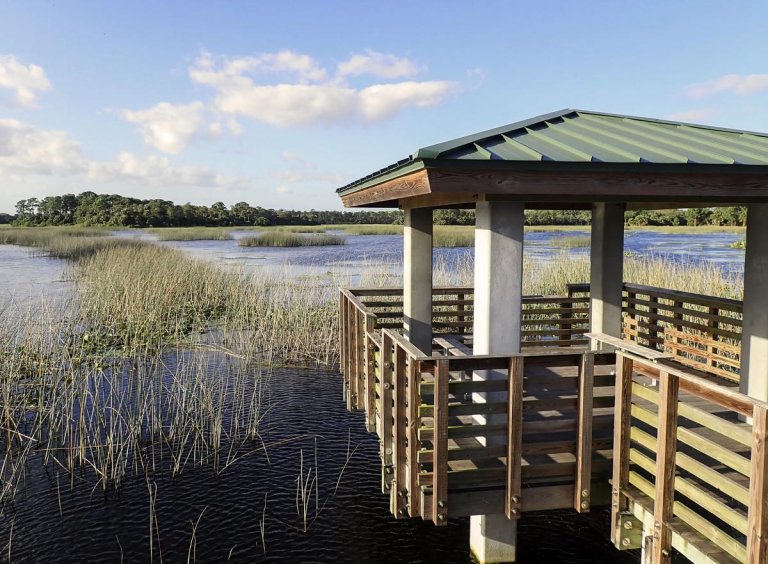
5 Outdoor Adventures in the Palm Beaches for New Explorers
5 Outdoor Adventures in the Palm Beaches for New Explorers Now…

By: Hannah Deadman-Arnst
The Palm Beaches, Florida are home to unparalleled nature—from shimmering white sand beaches and aqua-blue waters to gorgeous tropical gardens. But did you know The Palm Beaches also offers endless ways to enjoy “wild Florida”?
Hiking in Florida doesn’t have to be intimidating. I’ve hiked hundreds of miles throughout the country, and South Florida offers some of the most unique experiences.
The Palm Beaches offers countless opportunities to enjoy raw, natural beauty—from expansive views of pristine wetlands and towering pines to Florida’s desert-like scrub ecosystem. I prefer hiking during the cooler, drier months of December, January, or February, but with favorable weather year-round, you can enjoy these trails any time. Read on to discover The Palm Beaches’ best hikes and outdoor spaces:

Everyone has to start somewhere. Thanks to the region’s level terrain, there are several locations perfect for those who prefer shorter or easier hikes. Plus, flatter terrain means better views of stunning sunsets!
Location: Jupiter (North)
Difficulty: Easy
Dog Friendly: No | Accessible: Yes (Partial)
Love local history and being by the water? Don’t miss this outdoor gem. The Jupiter Inlet Lighthouse Outstanding Natural Area is a 120-acre preserve that was designated in 2008 as a unit of the Bureau of Land Management’s National Conservation Lands. It is one of three Outstanding Natural Areas in the nation (the others are located throughout the American West and Alaska).
Both the Jupiter Inlet Lighthouse & Museum and the Loxahatchee River Historical Society are located within this natural area, making it a great choice for coastal views and learning about Palm Beach County’s rich history. Just north of Beach Road, you’ll follow short, firm trails and boardwalks through scrub and tropical hammock ecosystems before reaching a covered observation deck overlooking a mangrove estuary. The trail south of Beach Road gives you access to the Indian River and stunning views of the Jupiter Inlet Lighthouse, which was constructed in 1860.
Location: Palm Beach (Central)
Difficulty: Easy
Dog Friendly: Yes | Accessible: Yes
Situated on the barrier island of Palm Beach along the Intracoastal Waterway, the Palm Beach Lake Trail (5.5 miles) is a great place for those who prefer a paved trail experience. As you walk (or bike) along the path, you’ll see iconic viewpoints—including the Henry Morrison Flagler Museum, a Gilded Age estate, the historic kapok tree (a local favorite), the Society of the Four Arts, and much more. There’s also plenty of shade to keep you cool along the way.
Location: Hypoluxo (Central)
Difficulty: Easy
Dog Friendly: No | Accessible: Yes (Partial)
Located just off Hypoluxo Road and Federal Highway, this natural area comprises 98 acres of Florida scrub, wetlands, and pine flatwood habitats. It’s a great place to spot wading birds and gopher tortoises. If you climb the observation tower, you can even spot the home of the Barefoot Mailman, a late 19th-century figure who brought mail and other goods between Palm Beach and Key Biscayne before roads were constructed. Don’t miss the sandy Eastern Pondhawk Trail (1.5 miles), and be sure to go for a sunset hike for beautiful views!
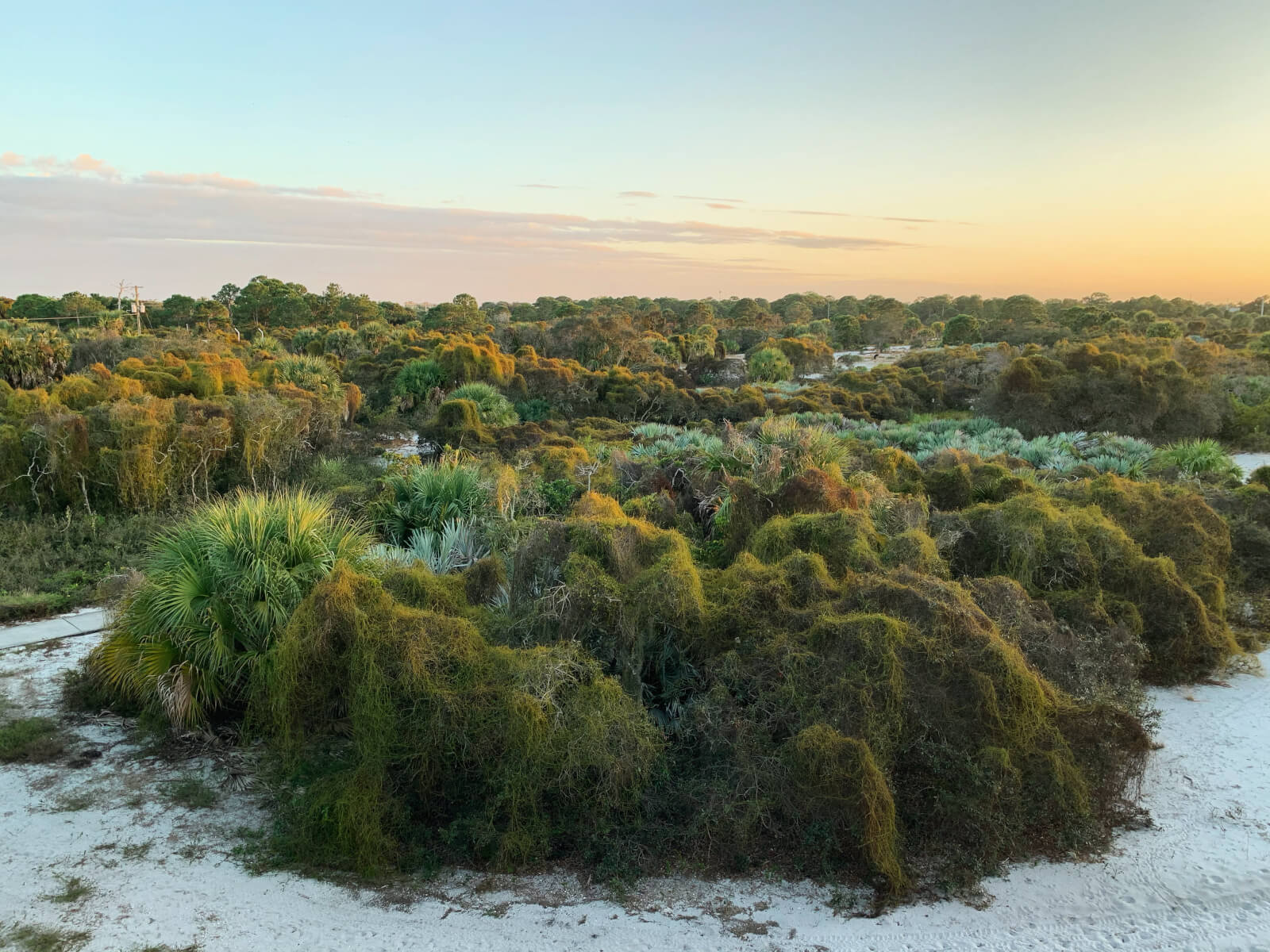
Location: Boynton Beach (South)
Difficulty: Easy to Moderate
Dog Friendly: Yes (Partial) | Accessible: Yes (Partial)
The only national wildlife refuge in Palm Beach County (and one of the largest urban wildlife refuges in the nation), Arthur R. Marshall Loxahatchee National Wildlife Refuge is an amazing place to take in Florida’s natural beauty and appreciate a small remnant of the northern Everglades. The shaded Cypress Swamp Boardwalk Trail (0.36 miles) offers hikers stunning views of towering cypress and plenty of opportunities to spot native species. Keep your eyes peeled for alligators, deer, wild boar, and wading birds, and don’t forget to give wildlife their space! For more of a challenge, consider walking the Perimeter Levee Trail, which spans a total of 36 miles. Opt to hike this trail in the winter months or during the mornings or evenings—as it has little shade.
If you’re up for more of a challenge, don’t miss these moderate trails located throughout The Palm Beaches! As always, don’t forget to bring plenty of water, sunscreen, and a hat.
Location: Juno Beach (North)
Difficulty: Easy to Moderate
Dog Friendly: No | Accessible: Yes (Partial)
Situated along the glimmering Atlantic, the Juno Dunes Natural Area is a great choice for an authentic South Florida experience. Divided into three tracts, the 569-acre preserve includes various short, marked loop trails (paved and sandy) that lead hikers through ancient dunes, tropical hammocks, and sawgrass wetlands. It’s also home to The Palm Beaches’ highest natural point! What’s more, the eastern part of the preserve runs adjacent to Loggerhead Marinelife Center, a sea turtle hospital and ocean conservation center that’s free to visit! You can even book a 45-minute guided hike with the center. An experienced naturalist will lead you through the coastal hammock habitat, pointing out native species and other special features.
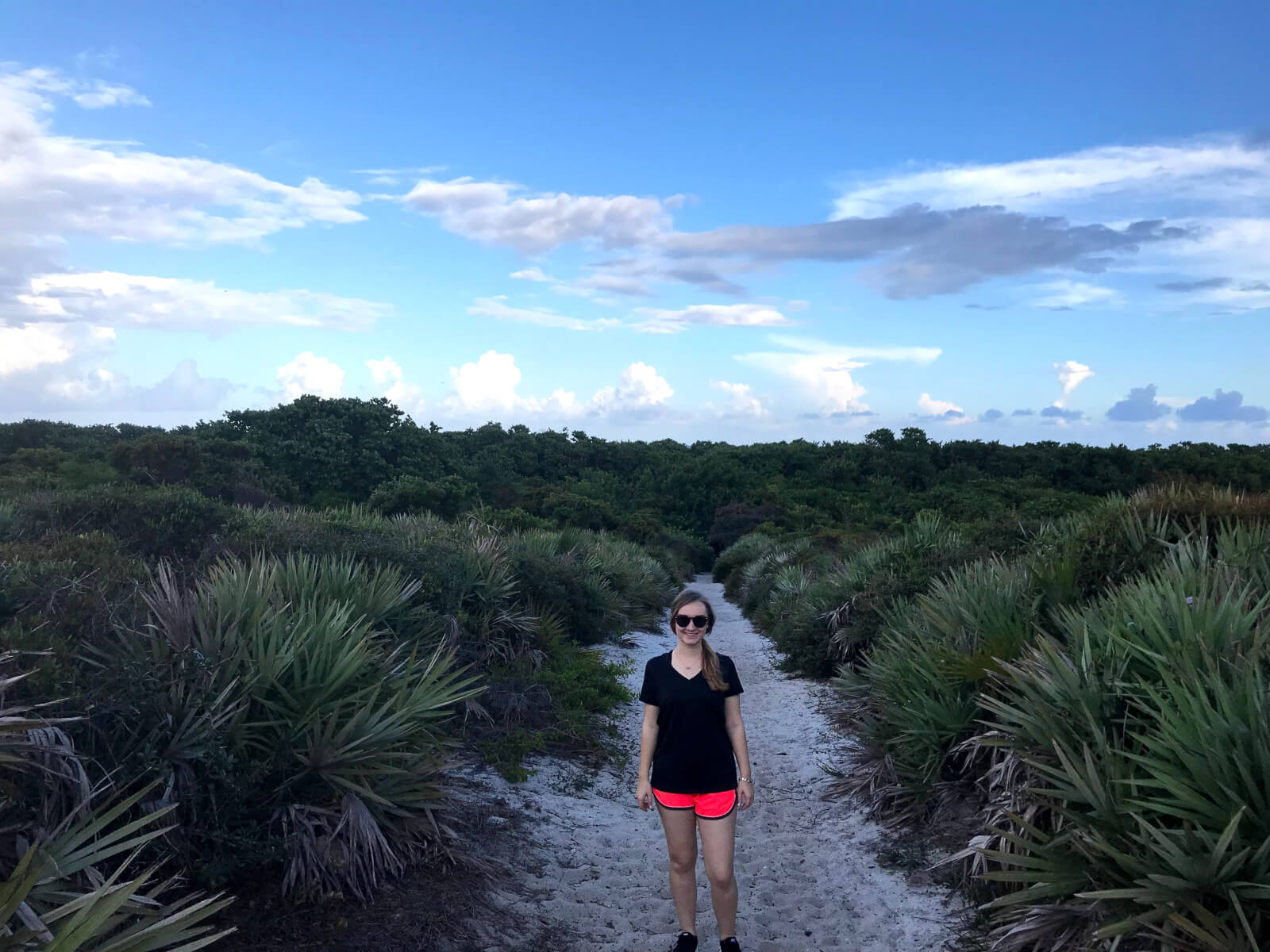
Location: Boca Raton (South)
Difficulty: Easy to Moderate
Dog Friendly: No | Accessible: Yes (Partial)
Did you know Florida’s scrub habitat is one of the most distinct ecosystems in Florida? At his 217-acre natural area, hikers can enjoy viewing this plant community, characterized by hardy, drought-resistant plants—such as Florida rosemary and oak scrub—which covers more than half of the preserve. Don’t miss the sandy, 2.8-mile Skyblue Lupine Hiking Trail and paved Cicada Nature Trail (0.7 miles). And keep your eyes open for gopher tortoises, cacti, and other flora and fauna.
Location: Wellington (West)
Difficulty: Easy to Moderate
Dog Friendly: No | Accessible: Yes
One of my new favorite places in The Palm Beaches, the Wellington Environmental Preserve is a 365-acre rainwater storage area featuring a variety of nature trails. The inner loop is nearly 3 miles long and features boardwalks and paved paths. Because most of the preserve encompasses wetlands, it’s a great place to spot wading birds like great blue herons, roseate spoonbills, and more! The preserve also includes a butterfly garden, a tall observation tower that you can climb, and a 3.6-mile equestrian trail.
Location: North Palm Beach (North)
Difficulty: Easy to Moderate
Dog Friendly: Yes (Partial) | Accessible: Yes (Partial)
With boardwalks, sandy trails, and plenty of beautiful views along the way, The Palm Beaches’ only state park is sure to be a place you’ll visit again and again. A long, stretching boardwalk connects the mainland with the barrier island, crossing pristine estuarine habitat. Look closely for ospreys, dolphins, and manatees as you cross! And, be sure to check out the park’s state-of-the-art nature center to learn more about the four main habitats (estuary, maritime hammock, dunes, and rock reefs) that the park protects.
Location: Jupiter (North)
Difficulty: Easy to Moderate
Dog Friendly: No | Accessible: Yes
One of the most beautiful places in Palm Beach County, Riverbend Park is a fantastic place to explore, whether you’re new to outdoor activities or you’re a seasoned hiker. With nearly 10 miles of trails winding through pine flatwoods, cypress swamps, oak hammocks, and wet prairies, there’s something for everyone.
Perhaps one of the most iconic experiences is the paddling trail—you can kayak, canoe, or paddle board through 5 miles of gorgeous canopied waterways (and part of the Loxahatchee River, which is Florida’s first federally designated Wild and Scenic River). Don’t miss the paved, shaded 2.9-mile loop trail. For more of a challenge, try trekking the Reese Trail or adding on additional spurs throughout the park.
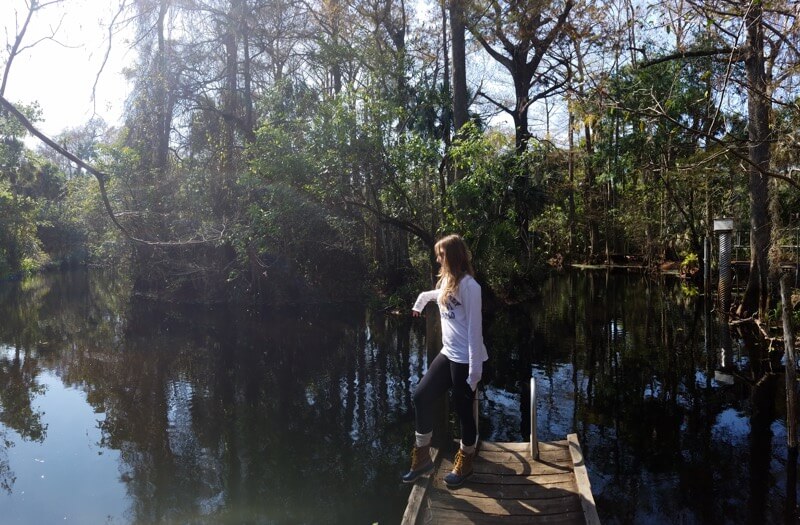
If you’re ready to step up your hiking game, consider exploring these three parks and trails, which offer several miles of more intense hikes and challenging conditions.
Location: Tequesta (North)
Difficulty: Moderate to Challenging
Dog Friendly: Yes | Accessible: Yes (Partial)
Want more of wild Florida? Do not sleep on Jonathan Dickinson State Park, home to some of South Florida’s most beautiful and unique terrain. There are several great trails to try, including Kitching Creek Nature Trail (1.5 miles) and the Green Loop Trail (5 miles).
You’ll trek through Florida ecosystems like pine flats, scrub and ancient sand dunes, and cypress swamps. Watch out for wildlife—there are great opportunities to spot species like Florida scrub jays, deer, wild boar, and more during your hike. Don’t miss the chance to follow the boardwalk and climb Hobe Mountain Trail for an exceptional birds-eye view of the entire park!
Location: West Palm Beach (Central/North)
Difficulty: Moderate to Challenging
Dog Friendly: No | Accessible: Yes (Partial)
Grassy Waters Preserve is yet another remnant of the once-expansive northern Everglades, boasting beautiful wetlands, tree islands, and forested hammocks. Now, this protected park serves as a habitat for deer, wild boar, sandhill cranes, and much more.
I love hiking the 4-mile Hog Hammock and 1-mile Cypress Boardwalk trails, both of which are shaded and offer plenty of opportunities to spot wildlife. Don’t miss hiking the graveled 16-mile Owahee Trail (which you can also bike) for an even greater challenge.
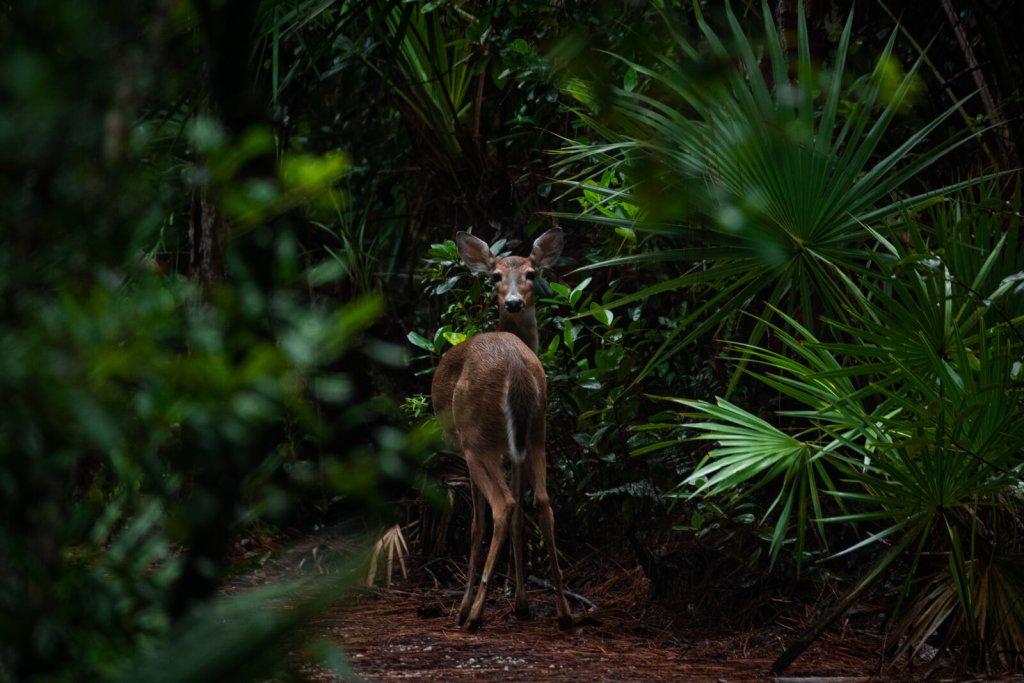
Location: Various Cities (West and North)
Difficulty: Challenging
Dog Friendly: No | Accessible: No
Hike 61 miles through some of The Palm Beaches’ most pristine wilderness. As its name suggests, the Ocean to Lake Trail begins at the Atlantic Ocean and ends at Lake Okeechobee, winding through Jonathan Dickinson State Park and various natural and wildlife management areas.
Along the way, you’ll experience various South Florida ecosystems, offering you something new every mile—including cypress swamps (which are incredibly magical when the air plants bloom), pine flats, wet prairies, and more. Because the trail is long, you’ll want to tailor your hike accordingly—or, plan to camp if you want to complete the full trail.
Loggerhead Marinelife Center offers a taste of the Ocean to Lake Trail during Hike2O, a three-day backpacking trip in collaboration with the Florida Trail Association’s Loxahatchee Chapter.
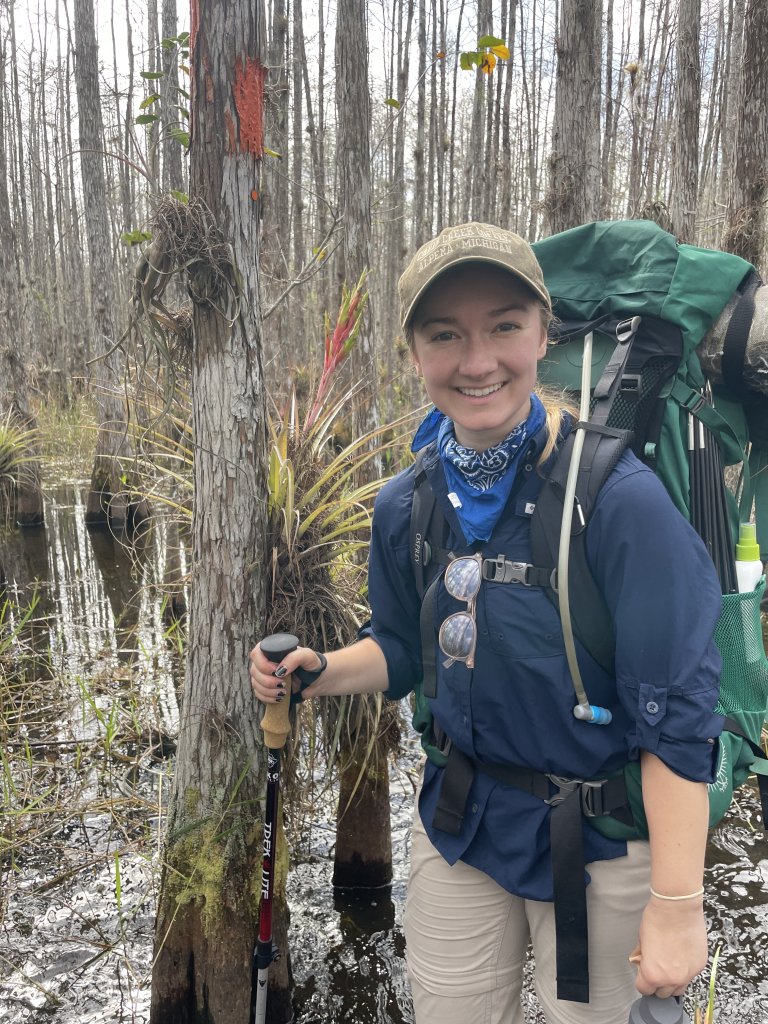
*Trail Tips: Before you blaze any trail, be sure to bring plenty of water and wear sunscreen and a hat. I also recommend wearing light outer layers like long sleeves and pants to avoid getting sunburned! Opt for shoes with some grip to them, like hiking boots, trail runners, or even sports sandals. Remember the Leave No Trace (LNT) rules, including leaving things as you found them, properly disposing of trash or recyclables, and respecting wildlife and others.
Always refer to trail maps to ensure you know your route or to determine whether they are open, pet-friendly, or wheelchair accessible—and tell a loved one where you’re hiking (and when you can be expected back). Most importantly, have fun!
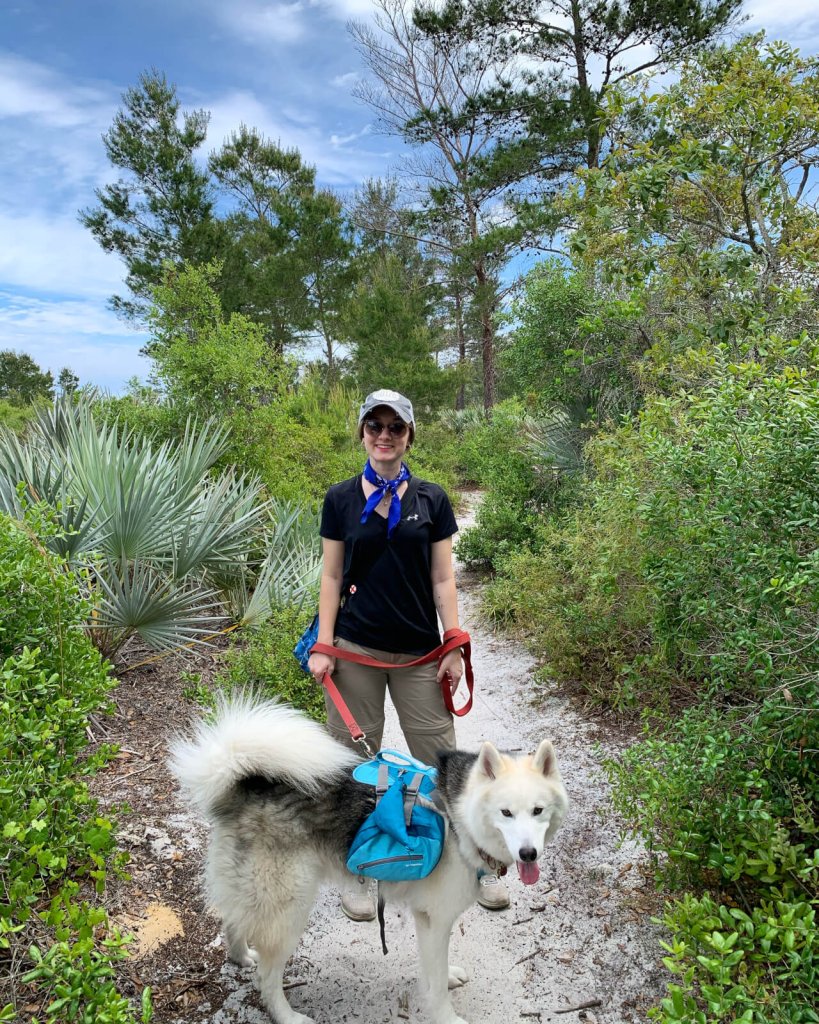
A creative thinker with a passion for storytelling, Hannah Deadman-Arnst is a full-time writer, communications professional, and traveler. While she calls Palm Beach County home, she travels and works remotely in her camper with her husband, Ryan, and huskies, Buddy and Sapphire. She has explored 42 states, visited 36 national parks and, since 2021, has driven 20,000 miles with her RV. Her love for travel and the outdoors began at a young age—boating Lake Huron, taking road trips, and having fun outside. She is also a trained dancer and singer. When she’s not creating, she loves to photograph her travels, hike with her dogs, find really good coffee and cuisine, and read. Follow her outdoorsy adventures at @hannaharnst!

5 Outdoor Adventures in the Palm Beaches for New Explorers Now…
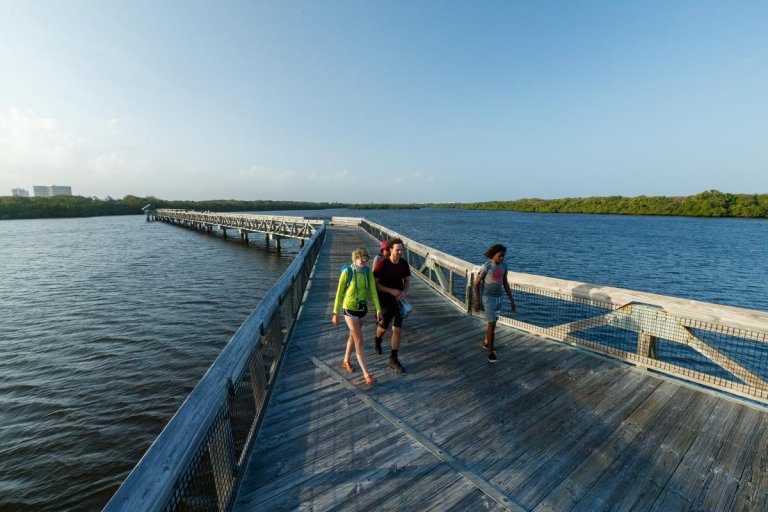
Uncover The Hidden Wild of The Palm Beaches In terms…
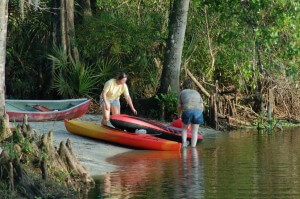
Naturally Spectacular: From Blueways to Byways No matter…
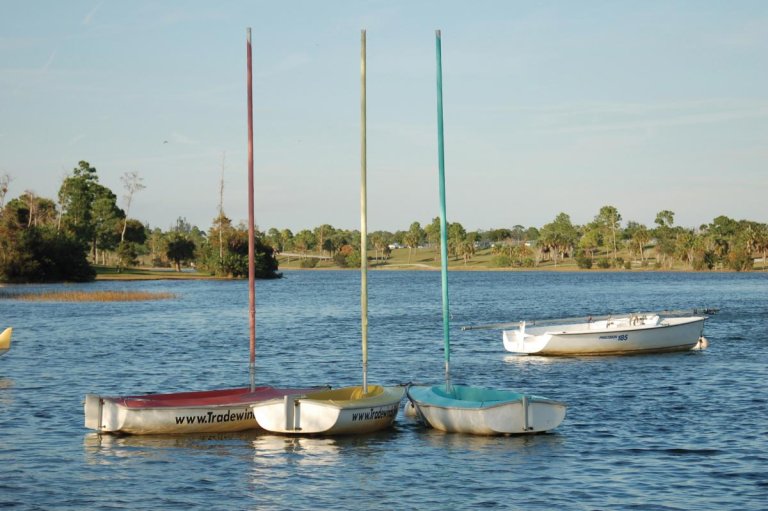
Wheelchair-accessible Nature Trails in The Palm Beaches Discover…
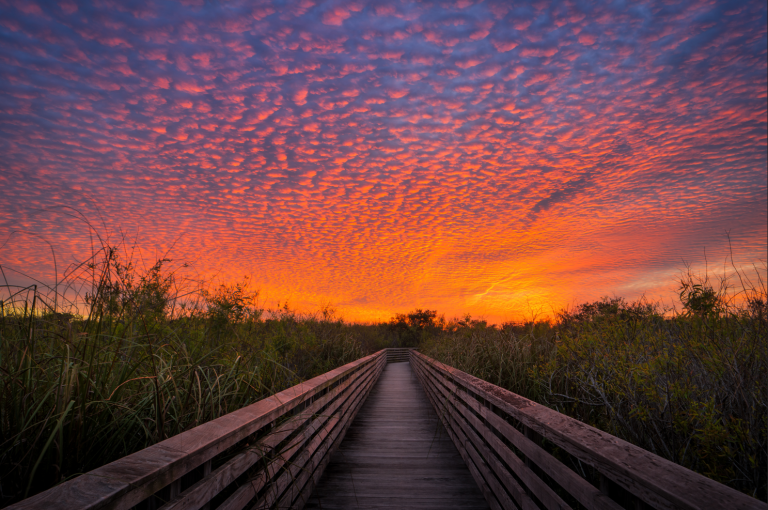
Outdoor Activities for Ultimate Adventure Seekers Nature…

Guide to The Palm Beaches for The Adventurer Active…
Browse lodging options in the one, the only, the Palm Beaches and discover America's First Resort Destination in sunny South Florida.